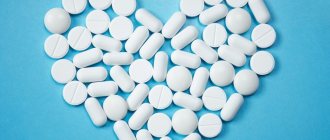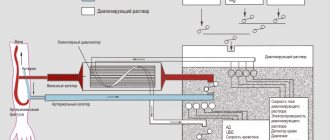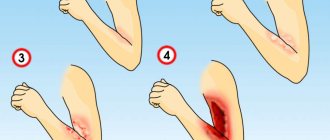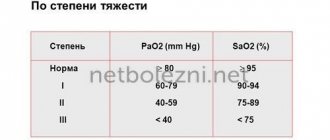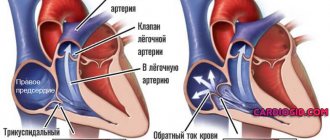Chronic arterial hypertension is a common medical problem of the 21st century, with which people of different ages turn to specialists in developed countries.
Specialists at the Yusupov Hospital diagnose and treat patients with arterial hypertension. The appearance of symptoms of hypertension should be a reason to consult a doctor.
Doctors have modern methods of treating hypertension at their disposal. Achieving a positive result in the treatment of hypertension is possible only with an integrated approach and careful adherence to the instructions of a specialist.
A timely examination can save your life and health.
Hypertension: general information
With arterial hypertension, a person constantly experiences high blood pressure. This condition occurs due to spasm of blood vessels, as a result of which blood flow through them becomes difficult. The diagnosis of arterial hypertension is made by a specialist when there is a stable increase in systolic pressure above 140 mmHg. Art.
To determine pressure, it is necessary to take at least three measurements at different times. The patient should be in a calm state and not take medications that lower or increase blood pressure.
Hypertensive crises
Hypertensive crisis is a state of individual significant increase in blood pressure in patients suffering from primary or secondary arterial hypertension, accompanied by the appearance or worsening of clinical symptoms and requiring rapidly controlled pressure to limit or prevent damage to target organs. It can be an exacerbation or complication of arterial hypertension, an indicator of inadequate therapy, a manifestation of drug withdrawal syndrome, the debut or the only manifestation of the disease.
Type 1 crisis (adrenal, neurovegetative) is manifested by an increase in systolic blood pressure, an increase in pulse pressure, tachycardia, extrasystole, and agitation. Type 2 crisis (water-salt, norepinephrine) has the following symptoms:
- a predominant increase in diastolic pressure with a decrease in pulse pressure;
- swelling of the face, legs, arms;
- a noticeable decrease in diuresis on the eve of a crisis.
To treat an uncomplicated crisis, doctors use the following drugs:
- nifedipine;
- captopril;
- carvedilol or other beta blockers;
- metoprolol;
- propranolol;
- furosemide;
- clonidine.
In case of a complicated crisis, the respiratory tract is sanitized, the patient is provided with oxygen, and venous access is made. The choice of antihypertensive drug is approached in a differentiated manner; it is administered intravenously. They quickly reduce the pressure, and then within 2-6 hours switch to oral medications, which reduce it to 160/100 mmHg. The patient is hospitalized in a specialized hospital.
Hypertensive cerebral crisis is a sudden increase in blood pressure to critical levels, which leads to impaired cerebral circulation. It is manifested by headache and other symptoms characteristic of liquor hypertension syndrome. It develops against the background of hypertension, atherosclerosis, pyelonephritis, glomerulonephritis, diabetic nephropathy, etc. In 50% of cases, hypertensive cerebral crisis occurs after stressful situations. It can be triggered by a sudden change in weather, overeating, hypothermia, or excessive physical activity.
Angiohypotonic hypertensive cerebral crisis develops against the background of a headache that is familiar and typical for hypertensive patients, which occurs in the form of a feeling of heaviness in the head or is localized in the occipital region. It intensifies with a body position that impedes venous outflow from the cranial cavity (bending, straining, coughing, lying down). Often the pain goes away when drinking coffee, strong tea or standing upright.
Hypertensive cerebral crisis begins with the spread of headache to the orbital area. In this case, patients complain of the appearance of pressure behind the eyeballs and on the eyes. A distinctive feature of angiohypotonic hypertensive cerebral crisis is its occurrence with a moderate increase in blood pressure (170/100 mm Hg). Then the pain rapidly intensifies within an hour and spreads throughout the head. Nausea and repeated vomiting appear, which brings some temporary relief.
Angiohypotonic hypertensive cerebral crisis is accompanied by autonomic reactions: tachycardia, increased sweating, wave-like breathing, and sometimes facial cyanosis. Then comes the late phase, which is characterized by the following symptoms: increasing lethargy, nystagmus, dissociation of tendon reflexes. During this period, blood pressure can be at the level of 220/120 mmHg. Art. or more, but sometimes it does not rise above 200/100 mm Hg.
Ischemic hypertensive cerebral crisis is observed much less frequently than angiohypotonic crisis. It is typical for hypertensive patients who tolerate increased blood pressure well and do not suffer from headaches. Often, ischemic hypertensive cerebral crisis develops against the background of very high blood pressure numbers, which may go beyond the tonometer scale.
Patients become overly energetic, overly emotional and outwardly too businesslike. Then they develop irritability, which is replaced by tearfulness and depression. They may start to behave aggressively. Due to the lack of criticism, patients themselves are not able to adequately assess their condition.
Subsequently, focal neurological symptoms appear:
- blurred vision (double vision or flickering “spots” in the eyes);
- sensitivity disorders (tingling, numbness);
- speech disorder;
- unsteady gait;
- vestibular ataxia;
- asymmetry of tendon reflexes.
A complex cerebral hypertensive crisis begins with clinical manifestations characteristic of the angiohypotonic variant of the course of cerebral crisis, but quite often occurs against the background of significantly increased pressure. As the crisis develops, focal symptoms appear, characteristic of the ischemic variant of the course of cerebral crisis.
Ischemic and mixed hypertensive cerebral crisis is an indication for hospitalization of the patient. Comprehensive treatment should include tranquilizing antihypertensive therapy, vasoactive drugs and symptomatic treatment.
The main way to prevent hypertensive cerebral crisis is adequate antihypertensive therapy for patients with arterial hypertension. If blood pressure is moderately elevated, work that requires heavy lifting, a fixed body position, or an inclined position should be avoided. There is no need to overcool your head or overexert yourself emotionally. For constipation, you need to follow a diet and take laxatives. If morning headaches occur regularly, it is better for the patient to sleep on a high pillow and take a long walk before bed.
In order to avoid a cerebral crisis when the headache intensifies, you need to warm your head with a hairdryer or a warm shower, massage the cervical-collar area, and drink strong tea. If you have an intense headache, it is recommended to take caffeine tablets or seduxen.
Causes of arterial hypertension
Experts fail to establish the causes of arterial hypertension in 90% of cases. In 10% of cases, the disease can develop as a complication of another disease or as a result of taking medications. The risk of developing hypertension syndrome may increase due to several factors:
- hereditary predisposition;
- age and gender of the person;
- smoking;
- frequent stressful situations;
- drinking alcohol in large quantities;
- excessive consumption of salt in food;
- low mobility and obesity;
- kidney diseases;
- metabolic disorder;
- diabetes.
Types of arterial hypertension
The classification of arterial hypertension is based on various parameters, one of which is the origin. Based on origin, the patient can be diagnosed with:
- Primary arterial hypertension is caused by many factors, which are being elucidated by specialists all over the world. However, it has been reliably established that the basis of this disease is unfavorable heredity in combination with the factors acting on it. The vast majority of patients - about 90% - suffer from this type of arterial hypertension. This disease has a second name – essential hypertension;
- Secondary arterial hypertension manifests itself when organs involved in the regulation of blood pressure are damaged, therefore the disease is otherwise called symptomatic arterial hypertension.
Diagnosis of arterial hypertension
With this disease, irreversible changes occur in the body that require immediate treatment. Diagnostics takes place in several stages and includes an examination by a specialist and collection of materials for making a diagnosis.
Diagnosis of a patient begins with measuring blood pressure; at least three measurements are required to confirm the diagnosis. If high indicators are obtained, the patient is sent for laboratory and instrumental studies:
- electrocardiogram;
- general and clinical urine analysis;
- biochemical detailed blood test;
- Ultrasound of the heart and internal organs.
The examination regimen is selected by the doctor individually for each patient. If the doctor assumes that the patient has secondary arterial hypertension, the classification of which is extensive, additional studies are carried out on organs whose dysfunction could cause arterial hypertension.
Classification of arterial hypertension
During the study of arterial hypertension, specialists have developed several classifications on various grounds: etiology, causes of increased pressure, degree of damage to systems and organs, stability and level of pressure, nature of the development of the disease. Some classifications have not lost their relevance over time: according to the stages and extent of the disease.
Based on the recommendations of the World Health Organization, a classification by pressure level has been developed, which has practical significance; the following conditions and degrees of arterial hypertension are distinguished:
- Optimal blood pressure is 120/80 mm Hg. Art.;
- normal blood pressure does not exceed 120/80 – 129/84 mm Hg. Art.;
- borderline blood pressure is in the range of 140/90 – 159/99 mm Hg. Art.;
- Arterial hypertension of the 1st degree is diagnosed when the pressure level is from 140/90 to 159/99 mm Hg. Art. In international practice, risk factors are taken into account when making a diagnosis. So, in a person with given blood pressure levels and in the absence of aggravating factors, a diagnosis can be made: arterial hypertension, stage 2, risk 1;
- Arterial hypertension of the 2nd degree is characterized by blood pressure in the range of 160/100 – 179/109 mm Hg. Art. With one or two aggravating factors, grade 2 arterial hypertension is noted, risk 2;
- Arterial hypertension of the 3rd degree is observed in a patient with a pressure of 180/110 mm Hg. Art. and higher. If more than three aggravating factors are present, arterial hypertension of the 3rd degree, risk 3, is diagnosed. If organ damage is observed, then the diagnosis of arterial hypertension of the 3rd degree, risk 4 is established;
- isolated arterial hypertension is characterized by a systolic blood pressure equal to or exceeding 140, and a diastolic blood pressure below 90 mmHg.
Classification of the disease is important in diagnosing hypertension and determining treatment options depending on the degree and stage. Thus, arterial hypertension of the 1st degree, risk 2, and arterial hypertension of the 2nd degree, risk 3, suggest different methods of treating hypertension.
Symptoms
With stage 1 hypertension, blood pressure increases to 150-95 mmHg and tends to be constant over a fairly long period of time. To reduce indicators, the patient needs to create favorable conditions to improve well-being.
The first symptoms of stage 1 hypertension are often not perceived by patients
as the main risk factor for the development of stage 2 hypertension, but most patients consult doctors with complaints of constant headaches, poor sleep, chest pain, and periodic blurred vision. The presence of small hypertensive crises is noted. The performance of the heart and kidneys remains within normal limits. They do not have any damage associated with hypertension.
The ambiguity of the symptoms of stage 2 hypertension makes it difficult to diagnose the disease in a patient, since high blood pressure can be associated with a large number of other problems in the body. When diagnosing the disease, specialists pay attention to the main symptoms of stage 2 hypertension. This:
- The appearance of swelling of the face and swelling of the eyelids and eyes.
- The appearance of spider veins on the surface of the facial skin.
- Painful throbbing in the temples.
- The appearance of aching pain in the back of the head.
- Lack of vigor and energy after a night's sleep.
- Apathy and irritability.
- Swelling of the hands.
- Periodic darkening of the eyes, inability to focus vision.
- Increased heart rate with low physical activity.
- Memory problems.
Classification of arterial hypertension by stages
Currently, doctors use a classification based on the nature of organ damage, which distinguishes 3 stages of arterial hypertension:
- arterial hypertension stage 1. At this stage, the patient experiences an intermittent and slight increase in blood pressure, and there are no complaints. The functioning of the cardiovascular system is not impaired.
- Arterial hypertension stage 2, in particular degree 2, is characterized by increased blood pressure. At this stage of the development of the disease, the left ventricle enlarges, and narrowing of the retinal vessels may also be observed.
- arterial hypertension stage 3. This stage is characterized by the following patient conditions: angina pectoris, heart failure, heart attack, stroke, renal failure, disturbances in the blood supply to the brain and eyes.
Disability due to hypertension 2nd degree
Stage 2 hypertension may be a reason to give a person a disability group. If there is a persistent impairment of the body's performance in a patient suffering from stage 2 hypertension, the patient is referred for examination to experts to clarify all indicators. The degree of disability is influenced by factors such as:
- stage of the disease;
- number of hypertensive crises;
- working conditions of the patient.
Establishment of a disability group is required for the patient to secure employment with special working conditions. Patients who have received a disability with a diagnosis of hypertension of the 2nd degree must be allowed to work subject to certain restrictions, which include:
- strong vibration and noise;
- physical exercise;
- emotional exhaustion;
- high altitude;
- long working day.
When diagnosed with stage 2 malignant hypertension, the patient receives group 2 disability due to inability to work. To confirm the conclusion, a medical examination is carried out once a year. Assigning a disability group to a patient with hypertension of 2 and 3 degrees is associated with the requirement of social protection of patients, since it has limited ability to work.
Arterial hypertension: treatment with modern methods
The choice of treatment for hypertension is made by specialists based on research data. Treatment methods for arterial hypertension are divided into non-pharmacological and medicinal.
Patients diagnosed with mild hypertension, in particular stage 1 arterial hypertension, may be exempted by their doctor from taking special medications. The main method of non-drug treatment is changing the patient’s lifestyle:
- rejection of bad habits;
- weight control;
- regular moderate physical activity. Daily activities such as moderate walking or light strength training are effective;
- reducing stress. During stressful situations, a person’s blood pressure may increase; it can be lowered with the help of massage, breathing exercises or meditation;
- including foods rich in macro- and microelements in the diet and reducing salt intake.
Medicines for arterial hypertension are prescribed to patients when non-drug therapy has proven ineffective within 3-4 months, and there are risk factors. Thus, arterial hypertension 2 risk 3 requires taking special medications. The number of drugs is determined by blood pressure and the presence of concomitant diseases.
Modern doctors prescribe drugs for the treatment of arterial hypertension in accordance with one of the strategies: monotherapy or combination therapy. When drawing up a treatment plan, the question of the admissibility of using one drug is the most pressing for the specialist.
In monotherapy, a patient with grade I is prescribed one drug at the beginning of the course of treatment. An important factor when prescribing a drug is its effectiveness in reducing the risk of complications. Currently, to control blood pressure, doctors use the most studied drugs belonging to two groups: thiazide-like and thiazide diuretics, which have a diuretic effect.
Combination therapy is prescribed to patients with a high degree of risk, as well as with stages II and III of the disease. With this method of treatment, drugs with different mechanisms of action are selected to lower blood pressure and reduce possible side effects.
Experts on the question of how, if a patient has arterial hypertension, how to treat this disease with drugs, prefer to use several groups of drugs:
- beta blockers. For several decades, beta blockers have been used as the mainstay of treatment for hypertension in children and adolescents. However, multiple side effects have now been identified, and therefore their use has become limited. Experts include the main side effects: sleep disturbances, increased blood glucose levels, weakness and mood swings. An important condition when using these funds is an electrocardiogram and regular monitoring of blood sugar;
- Diuretics are prescribed to patients for a long period; they remove excess fluid from the body. Side effects include: fainting, decreased calcium levels in the blood;
- calcium channel blockers. Drugs in this group are used quite widely to treat patients; doctors give preference to drugs with a long period of action. Side effects of blockers include: gastrointestinal disorders, rapid heartbeat, weakness, dizziness and swelling;
- ACE inhibitors. The mechanism of action of these drugs is to block the action of enzymes that are involved in the formation of a vasoconstrictor;
- alpha adenoblockers. The effect of drugs in this group is manifested in a decrease in pressure through blocking receptors located in the artery wall.
Folk remedies
When treating illness at home, many people prefer to use folk remedies. This therapy involves the use of medicinal plants that have a positive effect on the cardiovascular system.
You can treat the disease with the following recipes:
- Treatment can also be carried out with peppermint, cinquefoil, chamomile, and yarrow. These herbs go well together.
- Prepare a decoction of motherwort, horsetail, marsh cudweed, and valerian root. All plants must be taken in the same quantity. This remedy has diuretic effects and allows you to cope with single surges in blood pressure.
- Bee products and citrus fruits are actively used in the treatment of hypertension.
- You can treat with viburnum juice. To reduce blood pressure, it should be consumed three times a day, a quarter glass.
Folk remedies help cope with unpleasant symptoms of the disease and speed up the effectiveness of traditional therapy. Such recipes have proven their benefits over many centuries. People whose bodies do not tolerate medications well turn to this type of therapy. But it is important to remember that treatment of the disease with traditional recipes can only be carried out after consultation with a doctor.
Prognosis for arterial hypertension
Treatment of vasorenal arterial hypertension and the prognosis for this disease depend on the patient’s compliance with the recommendations of the attending physician and the adequacy of the prescribed therapy. The prognosis for hypertension can be quite favorable. However, for this it is important to identify the problem in a timely manner and develop treatment tactics.
The prognosis for women, as medical practice shows, is more favorable than for men. The course of the disease is influenced by the following factors: the rate of development of the disease, the stability of pressure and the presence of diseases of other organs and systems. Modern standards of treatment for arterial hypertension make it possible to achieve success in more than 85% of cases.
Prevention of arterial hypertension
Giving up bad habits and normalizing lifestyle are the basis for preventing hypertension. Knowledge of the principles of preventing hypertension allows you to prevent the disease, facilitate its course, and also eliminate possible complications. Experts distinguish between primary and secondary prevention.
Primary prevention is to prevent the development of hypertension. People at high risk of developing arterial hypertension should not only fight bad habits and adhere to the principles of proper nutrition, but also monitor their physical activity.
Secondary preventive measures are carried out for people with an established diagnosis, for example, gestational hypertension. The efforts of doctors and patients are aimed at preventing complications. Secondary prevention consists of two components: arterial hypertension (treatment with tablets) and non-drug treatment.
Doctors at the Yusupov Hospital have extensive experience in treating arterial hypertension. The quality of services provided in the hospital is at the European level. All diagnostic and treatment procedures are performed using the latest medical equipment. The rooms are equipped with maximum comfort for patients. You can make an appointment with a doctor by phone.
The danger of high blood pressure
The main danger of hypertension is its complications, leading to disability and death.
The most severe complications:
- from the heart - heart attack, development of arrhythmia, heart failure;
- in the brain - stroke, loss of memory and intellectual abilities (dementia);
- from the eyes - severe vascular disorders in the retina;
- kidney – the occurrence of failure;
- vessels - aneurysm (sac-like expansion) of the aorta, the rupture of which leads to almost instant death.



